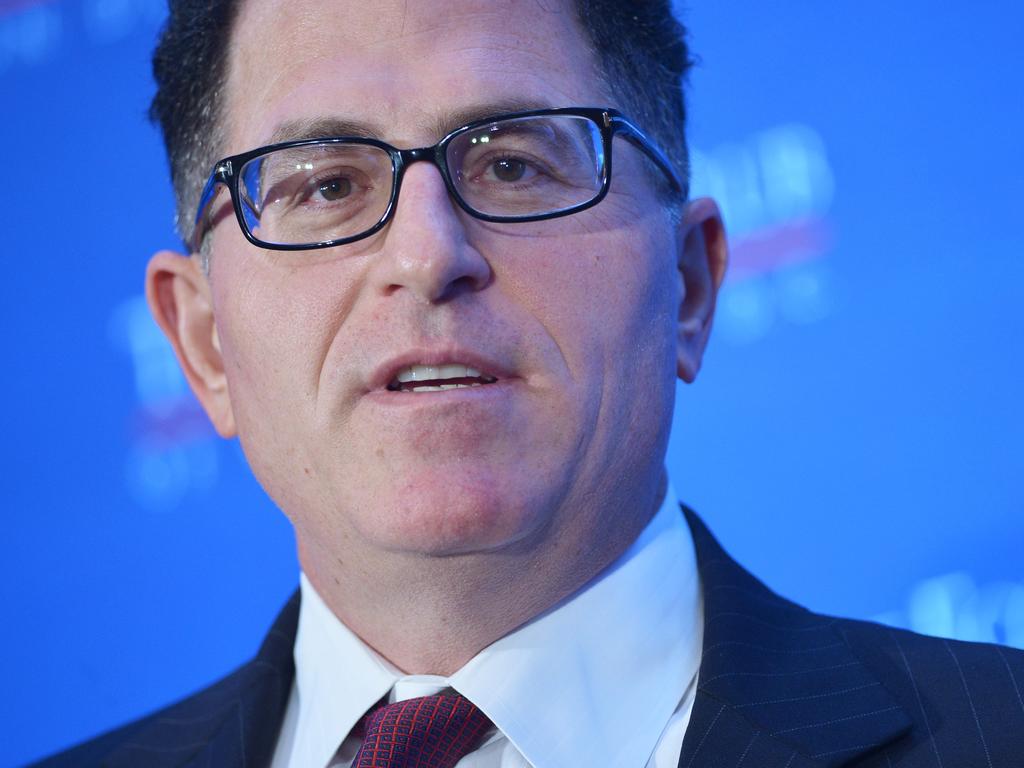Working from home: Who pays when it all goes wrong?
The move to remote working has thrown up a whole new set of questions about workers’ compensation. Story by Ewin Hannan

Dale Hargreaves was working two days a week from home for Telstra when she fell down the wooden stairs in her Brisbane townhouse and injured her left shoulder.
Before the fall, Hargreaves had been working for several hours in her home office and had been logged on to Telstra’s computer system. At 6pm she started coughing violently and decided to go downstairs to get a cough mixture from the fridge.
Hargreaves was dressed in casual clothes and socks but no shoes. Her coughing continued as she reached the top of the stairs and she lost her balance, falling and sliding on her back for seven steps.
Seven weeks later, at 8.40am, Hargreaves left her workstation because her son was leaving for school and, following a burglary, she had been instructed by Telstra to secure her home when working alone by locking the front screen door.
She fell down the stairs a second time and again injured her shoulder, requiring surgery. Telstra denied liability for the injuries, arguing they did not arise out of, or in the course of, her employment. But the Administrative Appeals Tribunal disagreed and ruled she was entitled to compensation.
It said her action in going downstairs to get cough mixture to relieve her coughing constituted “a need for an absence from her workstation for necessities of nature such as a toilet break or a meal break”. Given Telstra’s requirement for her to keep her screen door locked when working from home alone, the tribunal found she had been complying with this instruction before the second fall and “her action was within the scope of her employment”.
WFH MUST BE SAFE:
The 2011 judgment has been a talking point among employment lawyers as the surge in employees working from home during the COVID-19 crisis focuses attention on the obligation of employers to ensure staff have a safe place of work.
“The critical point is that when somebody is working from home, then their home, or at least that part of their home where they’re working, is their place of work,” industrial and employment law barrister Ian Neil SC says.
“Whether they’re working from home because the law requires it, or they’re working from home because their employer has directed them to do so, or they’re working from home because their employer allows them to do so, it’s exactly the same, and that’s something that many employers and employees do not appreciate. When somebody is working from home, then while they are performing work, and where they are performing work, attract all of an employer’s obligations to provide a safe place of work, and a safe system of work.”
THE NEW NORMAL:
The mass office exodus caused by the pandemic has meant millions of workers are suddenly at home for prolonged periods, often performing work duties at kitchen and dining tables, in passageways and bedrooms.
The promised nirvana of WFH has been undercut by anxiety about COVID-19, the economy and their future employment prospects. Workers are having to juggle caring responsibilities and, in Melbourne, supervise homeschooling for children.
Many have adjusted to the switch but workers also report a blurring of their working days where their working hours are longer but their productivity is lower. Mental health pressures, including feelings of isolation, are prevalent.
Employers express concern that the shift en masse from the office will lead to a surge in workers compensation claims and pressure to increase premiums. WorkSafe in Victoria says it has already received 56 claims for mental injury related to COVID-19. Employment lawyers say there are a whole range of scenarios in the 2020 home workplace where workers compensation claims could be successful.
One feature of the home working life in recent months, given public health restrictions and the growth in online shopping, is workers being interrupted by Australia Post deliveries.
“An example I heard of recently was an employee who was working from home and suffered a serious back injury while taking delivery of some boxes of equipment and office supplies,” Neil says. “The boxes were stacked by the delivery people outside the front door and then while the employee was carrying them into their home and stacking them they hurt themselves.
“There wouldn’t be any doubt that they were working, and that connection with work is all you need to attract employer’s liability in common law and under the workers compensation legislation.”
BUT THE FACTS MATTER:
Success of claims depends on the specific facts. In 2015, the Queensland Industrial Relations Commission found in favour of a fleet services manager who injured his lower back after rushing out of his shower to answer his work mobile and slipping on wet tiles. The commission established he was on call on the night of the injury and that his boss previously had chastised him for not answering his mobile. Finding his employer encouraged and induced him to answer the phone, the commission ruled his employment was a significant contributing factor to his injury.
In 2020 in Melbourne, virtual exercise is happening in lounge rooms when workers cannot access their gym or exercise class. What if an employee is injured at home doing a virtual pilates class set up by their manager as a staff wellbeing activity?
Michael Poulos, a principal in McCabe Curwood’s workplace risk and compensation group, says an employee could be eligible if the yoga or pilates session was organised and promoted by the worker’s employer.
“It’s all about control and inducement by an employer,” he says. “They’re the terms that the courts use. So if you’ve got an element of control — ie, I am a partner of this firm and I tell everyone to come and play touch footy with me at lunchtime — I have induced or got the control in relation to being a senior at the firm and they’re attending.
“It immediately translates to a work activity, whereas if one of my paralegals organised footy at lunchtime that’s a different scenario.”
EXERCISE COULD BE FRAUGHT:
Poulos says a compensation claim for an injury arising from daily external exercise “could go either way”. “Going for a walk, for instance, and doing your work calls like my partner does every morning, she’s clearly covered,” he says.
In 2016, ABC presenter Maryanne Demasi lost her bid for compensation after she broke her hip while on a morning jog. She was working from home and took a break from work at 9.30am to go for a run. While noting her manager’s evidence that she was jogging during work hours, the AAT ruled the time the injury occurred was not an “ordinary recess” in her employment.
“I would have thought it is beyond argument that going for a run during one’s lunch break is doing something ‘during an ordinary recess’ in one’s employment,” tribunal deputy president Stephen Frost said. “But taking a break for the specific purpose of going for a run, at any random time of the day, is in a different category.”
WFH HAZARDS:
Ed Mallett, managing director of Employsure, which provides workplace relations advice to employers, says companies are unlikely to be liable for exercise injuries unless it was a work-endorsed activity.
If a worker slips on the kitchen floor while working from home, he says, an employer could be liable if the employee successfully argued they were making a coffee or getting a snack for a designated, paid break. But if a worker suffered a burn making lunch while talking on a work phone or juggling emails, he says “this scenario would most likely favour the employer, as lunch breaks are typically taken on an employee’s own time”.
Mallett says pets “potentially pose a legal risk to employers”.
“If an employer has agreed for a pet to be in the defined work area and an employee were to trip over them and injure themselves, then it may well be covered,” he says. According to Safe Work Australia, the duty of care that employers have for the health and safety of their workers extends to when they are working from home.
Employers should provide guidance about a safe home office environment, including the set-up of the employee’s workstation. Workers should be allowed to borrow any work station equipment to use at home, such as their office chair. If necessary, an employer may talk to workers about inspecting their home workspace, using virtual means such as photos or video to avoid the need for a physical visit. But workers also have health and safety obligations to minimise risks when working from home including maintaining a safe work environment such as setting up a designated work area, moving furniture to ensure comfortable access, providing adequate lighting and ventilation, and removing trip hazards.
PANDEMIC STRESS:
ACTU assistant secretary Liam O’Brien says the psychological health of employees working from home is “really a very significant issue during the pandemic”.
“Workers are juggling homeschooling and caring responsibilities but potentially also lower productivity and extended work hours,” he says. “Employers should have regard to both the physical and psychological hazards that are now present. In our view, it doesn’t change anything in respect to employers’ obligations.
“People know about working from home, particularly where workers are balancing parenting responsibilities and meeting the demands of work. This presents some pretty unique hazards to workers, and employers should be working with workers to manage those hazards. That might mean looking at reducing the workload that might be expected at work.
“We saw that in the first wave of the pandemic where employers were conscious of the caring responsibilities of many workers and making adjustments accordingly. But also just thinking of some of the challenges that workers have in not having that direct supervision and the mental stresses that could create. In a general sense, it’s the same: it’s about the system of work and making appropriate changes to manage those hazards.”
PREMIUMS FEARS:
Jennifer Low, the Australian Chamber of Commerce and Industry’s director of workplace health and safety and workers compensation policy, says the scale of people working from home is a concern if employers, particularly small businesses, do not understand their potential liabilities. “You would expect premiums to go up because we know the mental health claims from working from home have increased over this period so that has to have an impact on premiums in some way. Our argument is, should employers be the ones who have to pay for it when a lot of these decisions have been made by governments?” Low says.
Mallett also expects workers compensation premiums to rise. “With employers moving from one workplace to multiple workplaces, many of which are entirely out of their sight and control, insurers will need to re-factor the risk,” he says. “Employers have not typically considered this when deciding working from home is a good idea.”








To join the conversation, please log in. Don't have an account? Register
Join the conversation, you are commenting as Logout